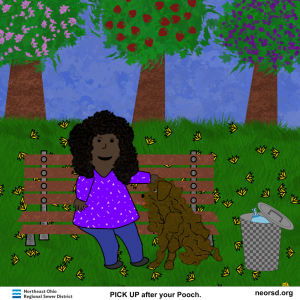Boundaries are important to learn from the day you are born. However, far too many people believe this means you must express what you need aggressively. There are much better ways to let others know what your appropriate emotional or physical limits are. You can communicate clearly with these tips.
Be Assertive.
When setting boundaries, you should be confident but not belligerent. Calmly state your request, but be prepared for the worst. Sometimes, whoever you are talking to will get angry or try to shame you for standing up for yourself. Do not cave into their unreasonable reactions. The differences between being assertive versus being aggressive include showing respect, not shouting your requests, and stating facts instead of accusations. Make sure to firmly repeat your statements if necessary because consistency is key when it comes to confidence. Another thing to keep in mind is to tell someone you are upset with their behavior instead of them. Healthy boundaries are set clearly and assertively.

Use “I” Statements.
“I” statements say how you feel instead of a general one. For example, if a co-worker remarks that women are not as smart as men, you can get your point across better if you object to the remark in the first person. Tell the person, “I find what you said sexist. Please do not say things like that again.” They will understand your boundaries more than if you said, “You are a woman-hating idiot!” First-person statements make it easier for the other person to listen to opinions. Others will more likely listen if you express yourself this way.
Teach Boundaries in Age-Appropriate Ways
It is never too early to teach children the importance of boundaries. For instance, preschoolers can understand the power of the word “no” if someone hits or touches them inappropriately. If this happens, teach them to say “no” and to tell a trusted relative, teacher, or adult friend. Adults should also teach children the difference between good and bad secrets. For instance, you can say that a good secret is surprising a friend with a toy on their birthday, whereas a bad secret is a bully threatening to beat them up if they do not give them lunch money. Good secrets are mostly eventually revealed, and bad ones hurt people.
Consider Culture.
There are many types of boundaries, but cultural ones are not often considered by people. These boundaries can be physical or situational, such as in the workplace. Cultural boundaries can be something as simple as a greeting. Case in point, Americans say hello with a handshake, and Italians say hello by kissing each other on the cheeks. While it is easy to hold boundaries we grew up with, it is equally as important to have “self-insight” to “better navigate our increasingly global world” consider what barriers others may have from their upbringing. You can learn what lines not to cross from a library book or a friend from a different background. Consider yours and others’ culture when setting boundaries, and when learning to understand those boundaries, keep in mind that these boundaries may be different depending on culture.

Face Your Fear.
There are always chances that your boundaries will be tested, and it is normal to be afraid of this. Try writing what boundaries you want others to respect in a journal or talking to a therapist if this is a major fear that you are facing. Another method is taking deep breaths and calmly stating your wants in a mirror. It is important to practice being confident, but do not worry if you do not have the courage at first. Just remember, when setting and expressing your boundaries, be calm, collected, and consistent.
Overall, remember that standing up for yourself does not mean you are inconsiderate or pushy. Confident and respectful people are on a good start to a path of healthy boundaries.
Read more articles related to personal development on our Zealousness blog Personal Development – iN Education Inc. (ineducationonline.org).
Sources:
- Diggs, Krystaelynne Sanders. Where Hands Go: The Power of No. Diggs Publishing, 2023.
- Coppock, Mary Jane. “8 Tips on Setting Boundaries for Your Mental Health – DBSA.” Depression and Bipolar Support Alliance. October 6, 2021. https://www.dbsalliance.org/support/young-adults/8-tips-on-setting-boundaries-for-your-mental-health/.
- Nash, Jo “How to Set Boundaries – State What You Want.” Positive Psychology. n.d. https://positive.b-cdn.net/wp-content/uploads/2022/11/How-to-Set-Boundaries-State-What-You-Want.pdf.
- Johnson, Camille S. “We Are Defined by Our (Cultural) Boundaries.” Psychology Today. May 16, 2013. https://www.psychologytoday.com/us/blog/its-all-relative/201305/we-are-defined-our-cultural-boundaries.























